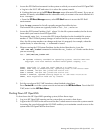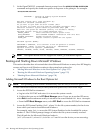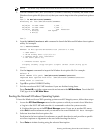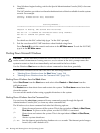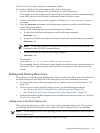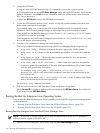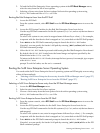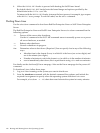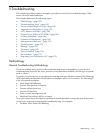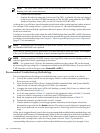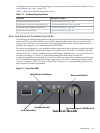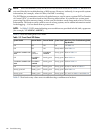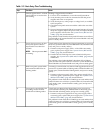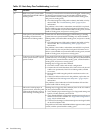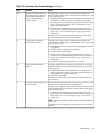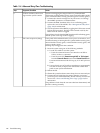
5 Troubleshooting
This chapter provides preferred strategies, procedures, and tools for troubleshooting rx3600
server error and fault conditions.
This chapter addresses the following topics:
• “Methodology” (page 139)
• “Troubleshooting Tools” (page 147)
• “Errors and Reading Error Logs” (page 154)
• “Supported Configurations” (page 155)
• “CPU, Memory and SBA” (page 158)
• “System Power (BPS and I/O VRM)” (page 164)
• “Cooling Subsystem” (page 166)
• “Common I/O Backplane ” (page 167)
• “Management Subsystem ” (page 170)
• “I/O Subsystem ” (page 171)
• “Booting ” (page 173)
• “Firmware” (page 174)
• “Server Interface” (page 174)
• “Environment ” (page 175)
• “Reporting Your Problems to HP” (page 175)
Methodology
General Troubleshooting Methodology
There are multiple entry points to the troubleshooting process, depending on your level of
troubleshooting expertise; the tools, processes, and procedures available, and the type of system
fault or failure.
Typically, you select from a set of symptoms, ranging from very simple (System LED is blinking)
to the most difficult (Machine Check Abort, for example, MCA, has occurred). The following is
a list of symptom examples:
• Front Panel LED blinking
• System Alert present on console
• System will not power on
• System will not boot
• Error or event message received
• Machine Check Abort (MCA) occurred
Next, you narrow down the observed problem to isolate the failure to a specific part of the server,
so that you can perform more detailed troubleshooting. For example:
• Problem- Front Panel LED blinking
Methodology 139



